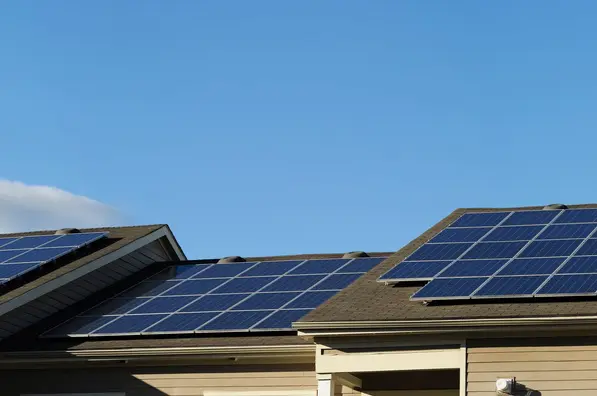
New technical standards for inverters that control rooftop solar, battery storage devices and electric vehicle charging will come into effect in December, the Australian Energy Market Commission has ruled, with further and potentially tougher rule changes likely to follow closely behind.
The new standards, confirmed in a final determination from the AEMC on Thursday, make it mandatory for all new inverters connecting to the National Electricity Market to have an undervoltage disturbance ride-through capability, to ensure household energy systems don’t ‘trip’ or disconnect when there are voltage disturbances on the network.
The change, which applies to all jurisdictions in the NEM from December 2021, is forward looking rather than retrospective, which means it will apply to new and upgraded systems, not existing ones. More than 2,000MW of rooftop solar is likely to be installed across the nation between now and then.
The AEMC said the December launch date aimed to give manufacturers enough time to prepare for the change, addressing industry concerns that solar wholesalers and retailers would be landed with redundant stock.
“These new standards allow us to do two important things at once – welcome more new technologies into the power system and at the same time help protect grid stability. The more we keep the system stable, the more solar we can connect up and the faster we can decarbonise,” said AEMC chief Benn Barr on Thursday.
“The rapid uptake of solar means we must act now to make sure this technology and the system it uses work hand in hand.
“We need to keep pace with the change underway – nearly three million households and small businesses have taken up solar, and the demand for household batteries and electric vehicles will increase over time.”
The determination follows the publication of a draft of the updated Australian Standard, AS/NZS 4777.2 Grid connection of energy systems via inverters, Part 2: Inverter requirements, in December of last year, after an accelerated industry consultation and development time frame.
The rule change had been requested by the Australian Energy Market Operator less than 18 months earlier, as one of three AEMO was seeking to gain greater control and visibility over a distributed energy resource that was rapidly contributing up to 50 per cent of instantaneous demand across the grid – and considerably more in South Australia.
Among them, AEMO had also sought to gain the power to switch off inverters, remotely – as has been implemented in South Australia separately – but in its draft determination in early December, the AEMC said it had decided to focus on bedding down basic inverter standards, first, as the highest priority for a rapidly changing grid.
“What we’re doing with this rule change is getting something in place,” said the AEMC’s executive general manager of transmission and distribution networks, David Feeney, in an interview with RenewEconomy at the time. “South Australia had the most pressing need, and now we’re playing catch-up on one of the most urgent issues for the rest of the market.”
AEMO had supported this decision, but in a statement in January stressed that its next priority would be to “further develop the interoperability functionality of inverters, expanding device capabilities to allow remote output management, querying and changing device settings, and various options for coordination of DER.”
And in its statement this week, the AEMC has signalled that it, too, is keen to get going on the “raft of changes” still required to better integrate rooftop solar, batteries and electric vehicles into a grid built around centralised coal power plants. Although it stressed this week there was is no rule change on remote control of inverters lodged with the AEMC at present.
Other changes being considered by the Commission include to electricity pricing structures, to provide incentives for rooftop solar households to export power to the grid at times it is most needed. The Energy Security Board is also considering the issue of integrating distributed energy resources, with recommendations for public consultation due next month.
“It’s imperative that we make sure the right structures are put in place to support a whole new energy mix and a very different looking power grid than the one we’ve relied on in the past,” Barr said.
“But we need to do this in a way that helps more people to connect, protects those that don’t, and helps the system run smoothly overall. This means restructuring the system, including the market incentives and rules.”
To that end, the AEMC says it has decided to use “existing rules and industry frameworks” rather than establishing a new set of arrangements, making it faster and less costly to implement changes.
“This means the standards will more quickly be able to address the concerns of the Energy Security Board and AEMO about the impact that inverters tripping can have on the total power system,” the statement said.
And in a further clarification on this point, an AEMC spokesperson explained that the Commission would also use the existing framework for embedded generator (EG) connections (as per chapter 5A of the National Electricity Rules), including the definitions of micro-embedded generators and micro EG connection.
“The other thing it makes use of is existing compliance arrangements,” the spokesperson said. “So there is an obligation placed on distribution network service providers (DNSP) to be satisfied that the connecting inverter meets the standard.
“Device manufacturers and installers will be required to show the DNSP that the standard has been met. … [and] existing compliance and monitoring systems under the Clean Energy Council and the Clean Energy Regulator … should continue to apply.
“We did not want to replicate these systems in a whole new framework because this would be inefficient, duplicative and increase costs to consumers,” they said.

Sophie is editor of One Step Off The Grid and editor of its sister site, Renew Economy. Sophie has been writing about clean energy for more than a decade.
